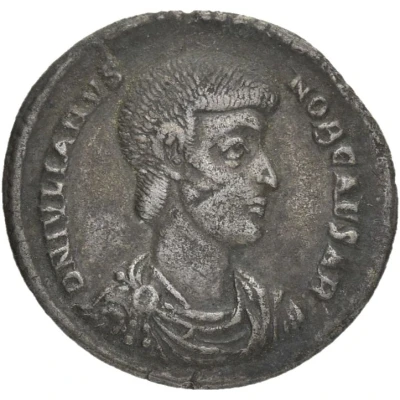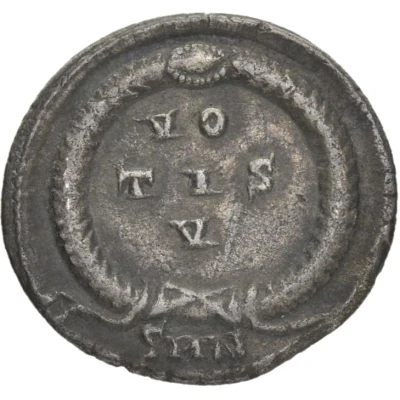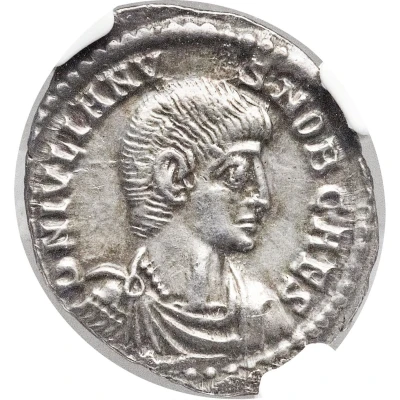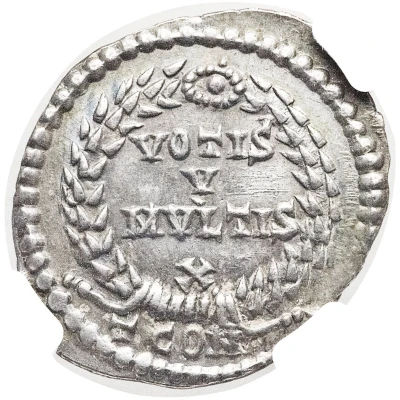


© Münzkabinett - Staatliche Museen zu Berlin (CC BY-SA 4.0)
Reduced Siliqua - Julian VO/TIS/V; Nicomedia
| Silver | 3.18 g | 20 mm |
| Issuer | Rome › Roman Empire (27 BC - 395 AD) |
|---|---|
| Emperor | Constantius II (337-361) |
| Type | Standard circulation coin |
| Years | 355-361 |
| Value | Siliqua (1⁄24) |
| Currency | Solidus, Reform of Constantine (AD 310/324 – 395) |
| Composition | Silver |
| Weight | 3.18 g |
| Diameter | 20 mm |
| Shape | Round (irregular) |
| Technique | Hammered |
| Orientation | Variable alignment ↺ |
| Demonetized | Yes |
| Updated | 2024-10-04 |
| Numista | N#392236 |
|---|---|
| Rarity index | 100% |
Reverse
VO/TIS/V within a wreath
Script: Latin
Lettering:
VO
TIS
V
Unabridged legend: Votis Quinquennalibus
Translation: vows (prayers) for five years of rule.
Interesting fact
The Julian coinage reform, which introduced the reduced siliqua coin, was an attempt to address the inflation that had plagued the Roman Empire during the 4th century. By reducing the weight and purity of the coinage, the government aimed to increase the amount of currency in circulation and stimulate economic activity. However, this move was met with resistance from many Romans who saw it as a devaluation of their currency and a sign of the empire's decline. Despite these challenges, the reduced siliqua coin remained in circulation for several decades and is now a sought-after collector's item.



